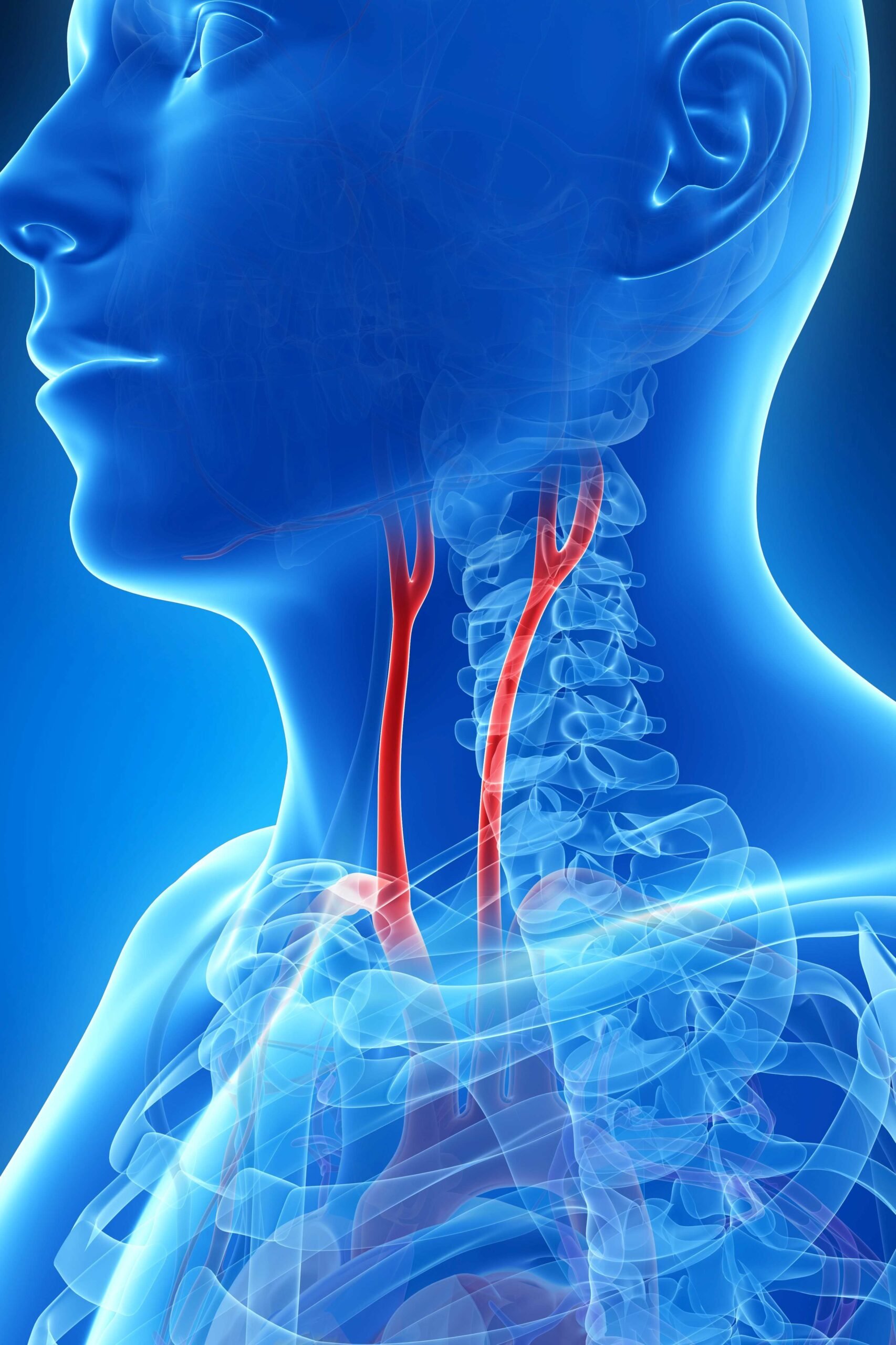Carotid Artery Disease
Carotid Artery Disease (CAD) happens when plaque builds up in the carotid arteries, which carry oxygen-rich blood from the heart to the brain.
What are the Carotid Arteries?
The carotid arteries are blood vessels that carry oxygen-rich blood away from the heart to the brain. Carotid arteries are important because they supply blood to the part of the brain that controls thinking, speech, personality, and the ability to feel and move. Carotid arteries are located on each side of the neck. You can feel them throb by placing your fingers gently on either side of your neck, just under your chin.
What is Carotid Artery Disease?
Atherosclerosis occurs when arteries narrow and harden due to a build-up of fatty deposits called plaque. Carotid artery disease (CAD) is when atherosclerosis happens in the carotid arteries. The plaque buildup can be caused by:
Diabetes
High Blood Pressure
Tobacco Use
High Cholesterol
Over time, the narrowing of the artery may become so severe that a blockage occurs. This can decrease blood flow to the brain and cause a stroke, leading to permanent loss of brain function. It may also cause a transient ischemic attack (TIA), also known as a “ministroke.” A ministroke is like a stroke, but the symptoms are temporary and can last from a few minutes to 24 hours. According to the National Stroke Council, more than half of strokes in the U.S. occur because of CAD.
Diagnosis
CAD is usually discovered during a routine physical exam. Healthcare providers can hear sounds called carotid bruits with a stethoscope. Imaging tests can assist in confirming a diagnosis of CAD. These tests include:
Carotid artery duplex scan—an ultrasound examination of the neck arteries
Angiogram, which can detect blockages on images taken when a contrast dye is injected into the blood vessels. Options include:
Magnetic resonance angiogram (MRA)
Standard (X-ray) angiogram
Symptoms
For many people, a TIA is the first obvious sign of arterial disease. Symptoms of stroke and TIA are similar and may include:
• Blurring, dimming, or loss of vision
• Tingling around the mouth or difficulty with speech
• Inability to move an arm or leg normally
• Numbness in part of the body
• Rarely, a sudden, severe headache
A TIA is a strong warning sign. The symptoms may resolve, but when a TIA occurs, it indicates increased risk of a stroke. A TIA should be treated as a medical emergency. If you think you are experiencing a stroke or TIA, get medical attention immediately!
Treatment
The goal when treating CAD is to “normalize”, or reduce the risk factors that cause artery blockages. This can include:
Taking specific medications (such as antiplatelet medications) as determined by your healthcare provider
Angioplasty, a surgical procedure to open a narrowed carotid artery
Placement of a stent
Lifestyle changes, such as quitting tobacco products or improving diet and exercise to lower cholesterol and high blood pressure
Individuals with severe blockages (up to 60% or 70%) of the carotid artery may be referred for a surgical treatment called a carotid endarterectomy. This procedure removes plaque from the artery wall to restore blood flow. It is an outpatient procedure, and patients usually recover quickly. Most people can soon resume their normal day-to-day activities. There are always new or improved ways to treat and manage CAD. Talk with your healthcare provider about which options are right for you.
Prevention
It is important to care for your health through exercise, proper nutrition, and taking medications as prescribed. If you have risk factors for CAD, you should talk with your healthcare provider. If you have any symptoms, it is critical to seek help right away to manage and reduce your risk.
→ Need a place to start with exercise? Sign up for a free membership and check out the Beginning Exercise for Vascular Health course!
Risk Factors
Carotid artery disease has risk factors similar to peripheral artery disease (PAD) and coronary heart disease:
Family history of atherosclerosis
Age
Men have a higher risk before age 75
Women have a higher risk after age 75
Smoking
Hypertension (high blood pressure)
Diabetes
High cholesterol, and especially high amounts of low-density lipoprotein (LDL, or “bad”) cholesterol
Existing diagnosis of PAD or heart disease
Resources
Be The Voice For Patients Like You!
Vascular Cures is inviting patients and advocates to share their stories, advise on our programs, and help us advocate for patient needs. Patients as Partners is a community where patients are heard, empowered, and encouraged to impact the health system. Learn more and request more information here.



